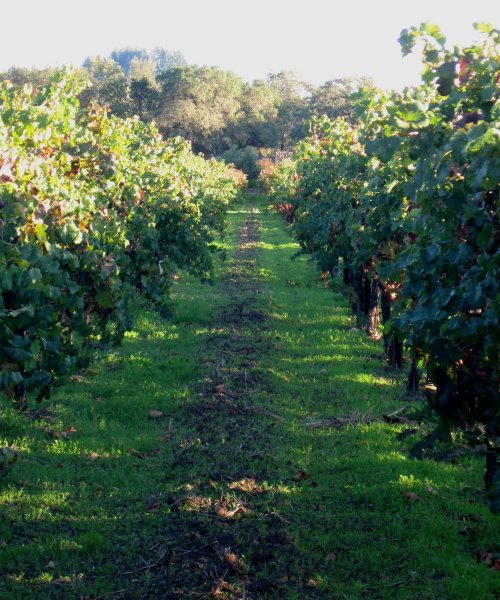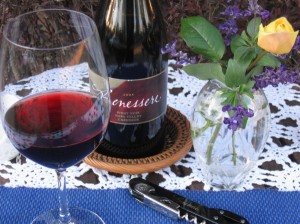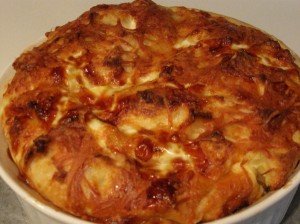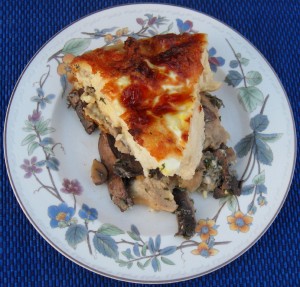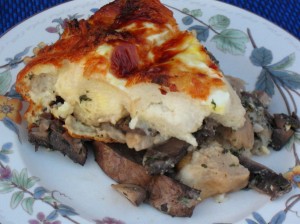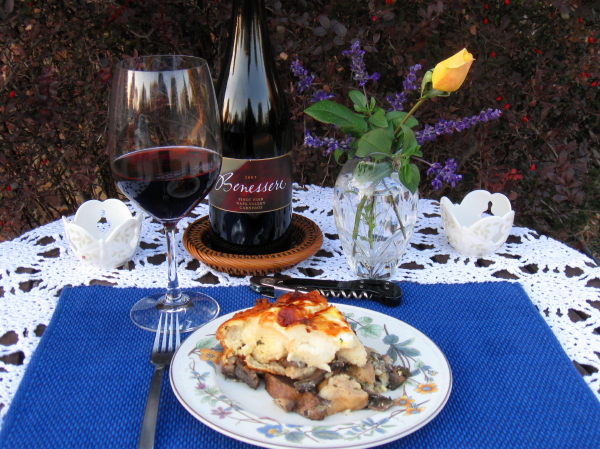Nov 10 2010
Burgundy Style Red Wine in Italy?
Of course the answer to the title of this week’s article is “yes”. Your eyes did not deceive you. Italy, despite its prowess with all things Sangiovese and Super-Tuscan, does grow grapes specifically to produce Burgundy style red wines. Before you race to your corner wine shop ready to stump the local clerk or armed with the hope to purchase one of these Italian gems, take into consideration that these types of grapes are not widely grown and similarly are limited as to where they can be grown. Italy’s soil and climate largely are not conducive to many grapes that fare well in the Burgundy region of France or other cooler climates. However, if you find yourself near Alto Adige (or specific micro-climates), the opportunity waits to sample some Pinot Nero. That’s right: “Pinot Nero” which is Italy’s style of “Pinot Noir”.
Pinot Nero is largely grown in the above-referenced Alto Adige region of Italy. Grown there it is capable of producing similar delicate nuances known to the Burgundy style of Pinot Noir but perhaps with slightly brighter red fruit on the palate. In California, the likelihood of finding an Italian style Pinot Nero seems unlikely: unless you visit Benessere Vineyards (“Benessere”) in Napa Valley. As often featured on this site, Benessere is well known for producing an array of wonderfully crafted Tuscan wines. Much to my surprise a few years ago, a “Pinot Nero” arrived on my doorstep. At the time I was mildly annoyed as so many wineries were desperately clinging to the popularity of the movie “Sideways” and seemingly “everyone” has a Pinot Noir. But no, upon further research, Benessere did not fail me and instead continued to expand my knowledge of Italian style wines made in Napa Valley.
November is one of my favorite times to feature Pinot Noir (or in this week’s case, “Pinot Nero”). Light on tannins yet graced by pleasant acidity, Pinot Noir is a wine that seemingly shows off its best attributes on those increasingly chilly or rainy evenings in November. Looking at Benessere’s 2005 Pinot Noir (“Pinot Nero”) in the glass, its coloring is dominated by sparkling ruby jewel tones. If the glass is taken indoors under soft dining light, the wine will literally reflect and sparkle off the diner’s shirt (making it a wonderfully festive wine for the holidays). Since this vintage is a 2005, bottle aging has added visual dynamics to the wine in that the coloring shows layers of varying density and thinning at the upper edges. This winemaker’s Pinot Nero will age an additional four to seven years post-release: in this case, this vintage was released in 2007 and it is now nearly four years later making it an ideal time for consumption.
The bouquet, despite additional bottle aging, delivers festive aromas of cherries and raspberries, anise, pepper and a mild herbaceous note (which Pinot Noir wines are typically recognized for). In the mouth, the wine demonstrates that “slow and steady” aging does win the race with this Pinot Nero as the front palate is delighted by juicy fresh cherries and raspberries. Texturally, due to aging, the wine is light and flirtatious. Mid-palate the juiciness of berries increases but met with a smoothing slight vanilla flavor, which is intensified as it nears finish with a sprinkle of pepper and a lingering flavor of red berries. Fortuitous for Benessere, the grower of these grapes in the Carneros American Viticultural Area in Napa Valley produces small grapes which are known for intense flavors. This melds well into a Pinot Noir which is designed for bottle aging beyond immediate consumption upon winery release.
While November is a favorite time to feature Pinot Noir wines, it is also a favorite time to impress guests with mushroom-based recipes. In November, mushrooms come into season in the Bay Area as the region is greeted with the return of rainfall. This is a time when mushrooms are often at their most flavorful and a number of combinations are available at many local grocers. Knowing that mushrooms pair perfectly with Pinot Noir, this week’s menu hosts:
· Kristin’s Tuscan Mushroom Bread Pudding
Other times of the year, the notion of a bread pudding is too heavy to envision eating (in my opinion). But as the weather gets a bit cooler and the days grow shorter, bread puddings with red wine grow more attractive. In this recipe, I have elected to use both Portobello and Cremini mushrooms (which are lightly sautéed in some left-over dry white wine). Instead of using a French loaf, keeping in style with an Italian Pinot Nero, I selected a fresh Italian loaf from a local bakery. Herbs are still thriving in the garden, so I decided to use two different types of thyme (to create depth), marjoram, parsley and a sprinkle of oregano. Grating some Tuscan cheese and fresh Parmesan, the core ingredients were organized to create a very Tuscan flavored Mushroom Bread Pudding.
Pulling this Tuscan Mushroom Bread Pudding from the oven not only impressed guests but had filled the kitchen with wonderful rustic country aromas. This Italian flare continued in the flavors of the bread pudding to match up festively with Benessere’s Pinot Nero.
The result was a light meal that satisfied in an unexpected savory way. The Pinot Nero paired perfectly as the earthy flavors of the mushrooms accented the mild herbaceous notes of the wine. The red berries in the wine embrace the herbs and the cheese in the bread pudding and for a moment it would not be difficult to envision one’s self happily tucked away in a warm cozy Tuscan kitchen.
Whether it is a casual meal for a week night or an additional offering for the upcoming Thanksgiving holiday for the vegetarian-minded, my Tuscan Mushroom Bread Pudding is a natural companion to Benessere’s festive Pinot Nero.
Comments Off on Burgundy Style Red Wine in Italy?
